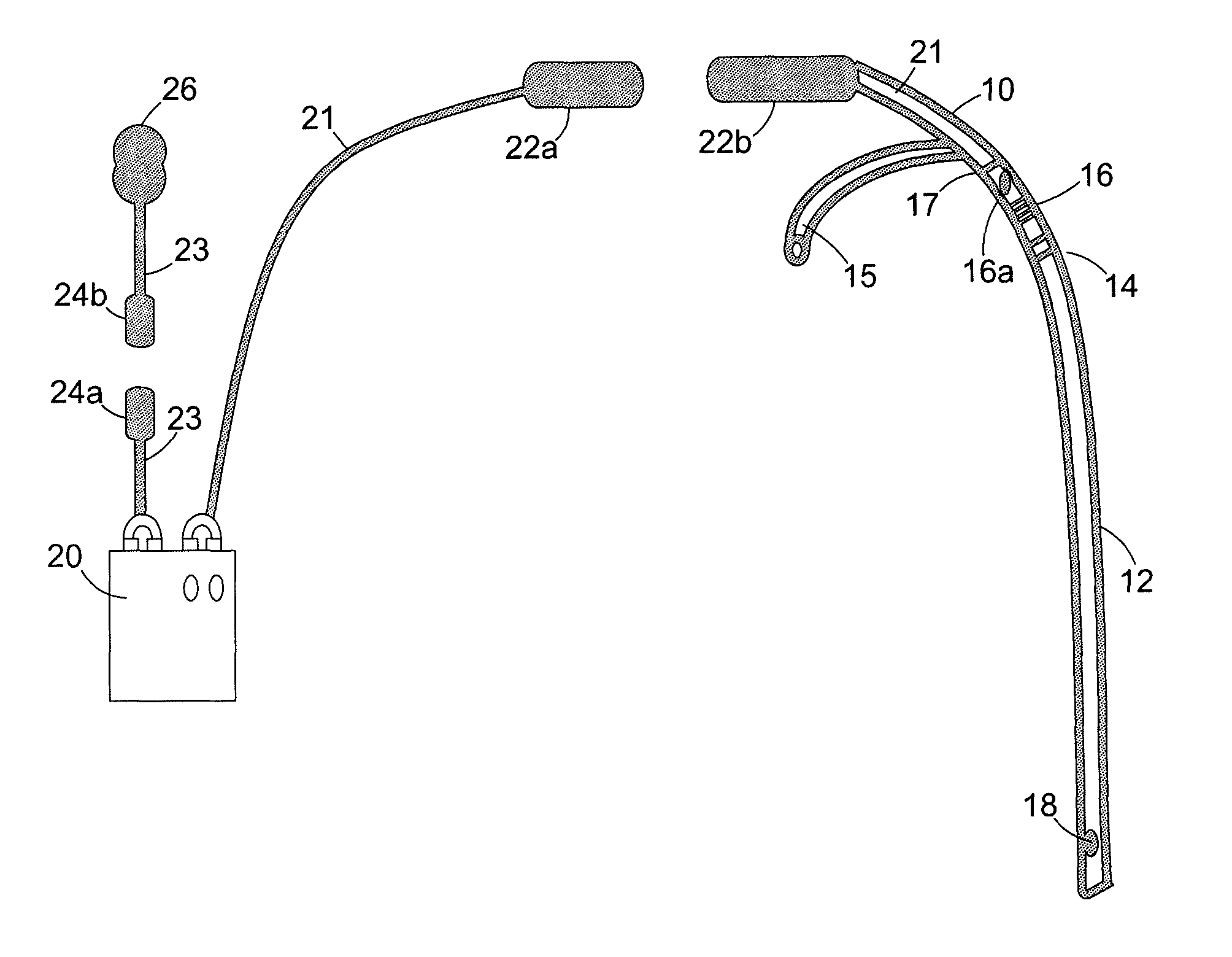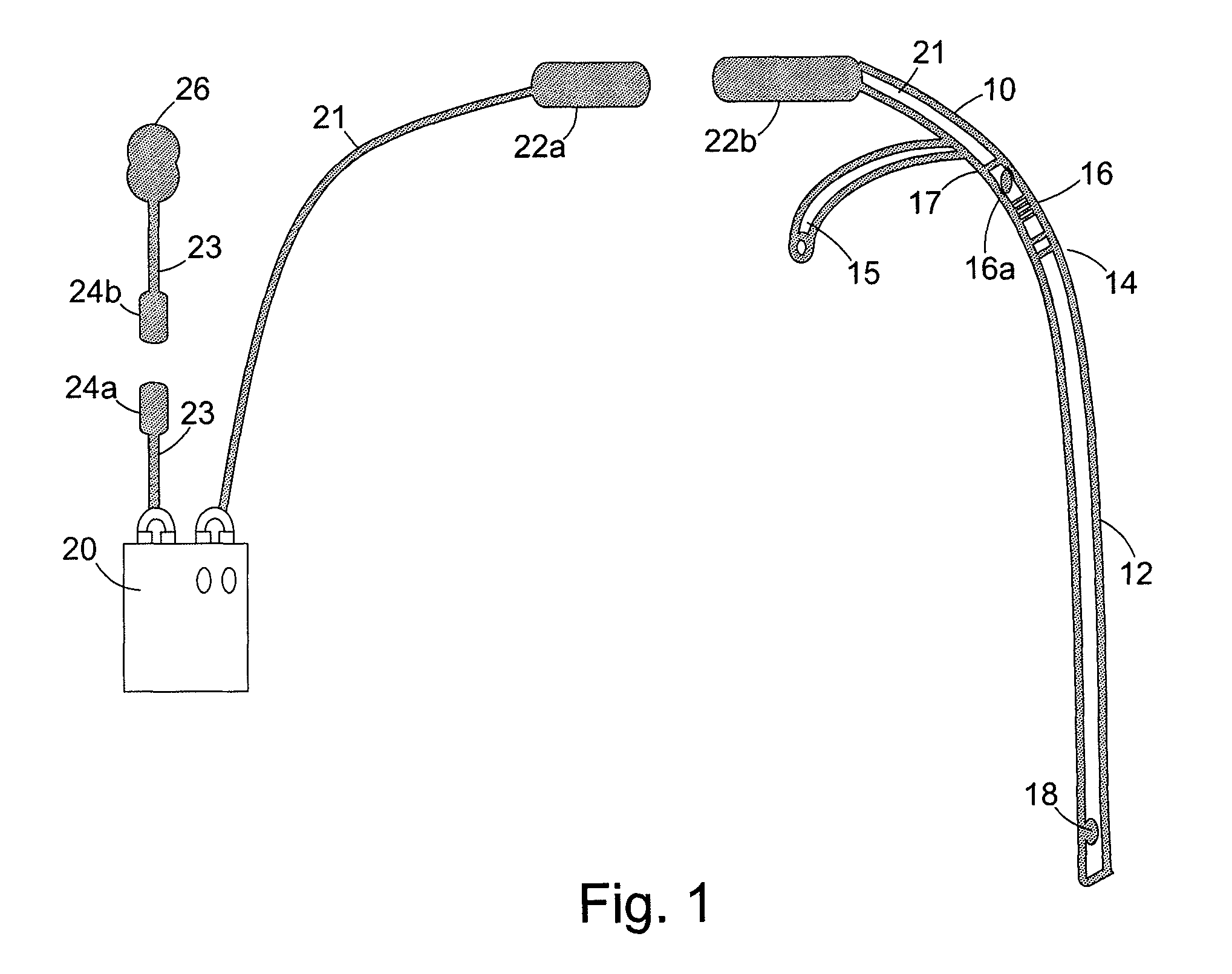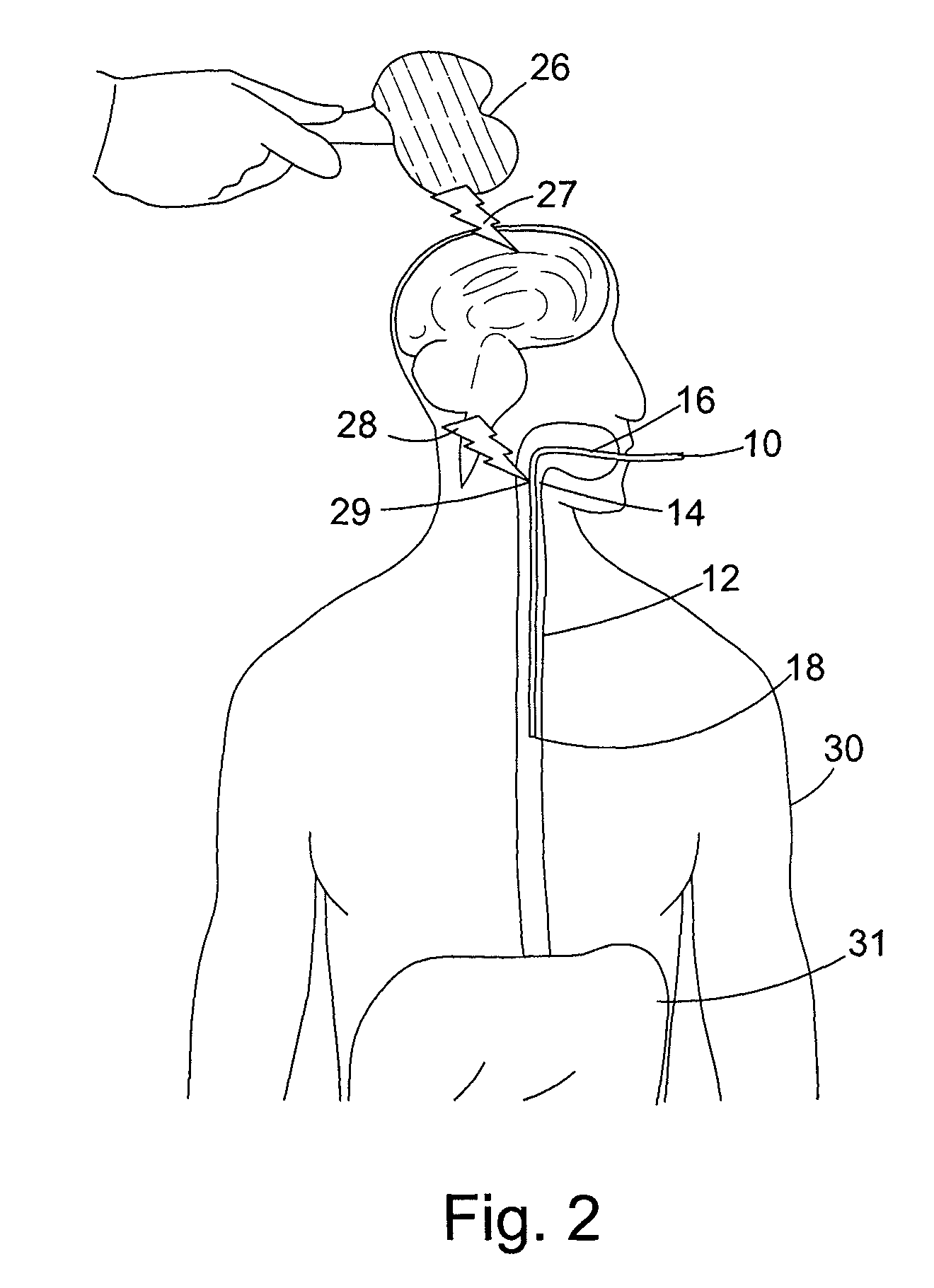Dysphagia recovery by electrical stimulation
a technology of electrical stimulation and dysphagia, which is applied in the field of facilitating recovery from dysphagia, can solve the problems of six-fold increased risk of aspiration pneumonia, devastating dysphagia after a stroke, etc., and achieve the effect of speeding up the recovery process and facilitating the recovery process of patients
- Summary
- Abstract
- Description
- Claims
- Application Information
AI Technical Summary
Benefits of technology
Problems solved by technology
Method used
Image
Examples
example 1
[0080]This example illustrates the effects of IPAS (Interventional Paired Associative Stimulation) at three different inter-stimulus intervals (ISI's) on the cortical excitability of swallowing musculature. IPAS relates to the pairing of peripheral and central stimuli, and has been previously illustrated as a novel method of enhancing hand cortical excitability. However, the development of dysphagia post stroke, and it's subsequent recovery, has been associated with changes in the excitability of the swallowing motor cortex, as for instance described within the article “Recovery of swallowing after dysphagic stroke relates to functional reorganization in the intact motor cortex. Gastroenterology 115: 1104-1112, 1998 by Shaheen Hamdy et al.
[0081]In the present experiment, 8 healthy human subjects were stimulated using paired stimuli. Each subject sat comfortably in a reclining chair, the cranial vertex was identified according to the international 10-20-system for electrode placement...
example 2
[0092]An assessment was made on the effects of different taste experiences on human cortical swallowing pathways. The assessment was made upon 8 healthy adult volunteers (seven of which were male, the minimum age of the volunteers being 29 years).
[0093]Each volunteer performed a ten-minute, liquid swallowing task using three (previously titrated) different taste solutions. The three solutions utilised were sterile water (neutral taste), 10% glucose (sweet / pleasant taste), and 0.5 mM quinine hydrochloride (bitter / aversive taste). Solutions were randomised to separate studies at least 24 hours apart.
[0094]Transcranial magnetic stimulation was performed over the swallowing motor cortex, before and up to one hour after each swallow task as with the methodology described in example 1. Cortico-pharyngeal motor responses were recorded from a swallowed intra-luminal catheter as a measure of cortical excitability. Responses were then compared using repeated measures ANOVA (Analysis of Varian...
PUM
 Login to View More
Login to View More Abstract
Description
Claims
Application Information
 Login to View More
Login to View More - R&D
- Intellectual Property
- Life Sciences
- Materials
- Tech Scout
- Unparalleled Data Quality
- Higher Quality Content
- 60% Fewer Hallucinations
Browse by: Latest US Patents, China's latest patents, Technical Efficacy Thesaurus, Application Domain, Technology Topic, Popular Technical Reports.
© 2025 PatSnap. All rights reserved.Legal|Privacy policy|Modern Slavery Act Transparency Statement|Sitemap|About US| Contact US: help@patsnap.com



